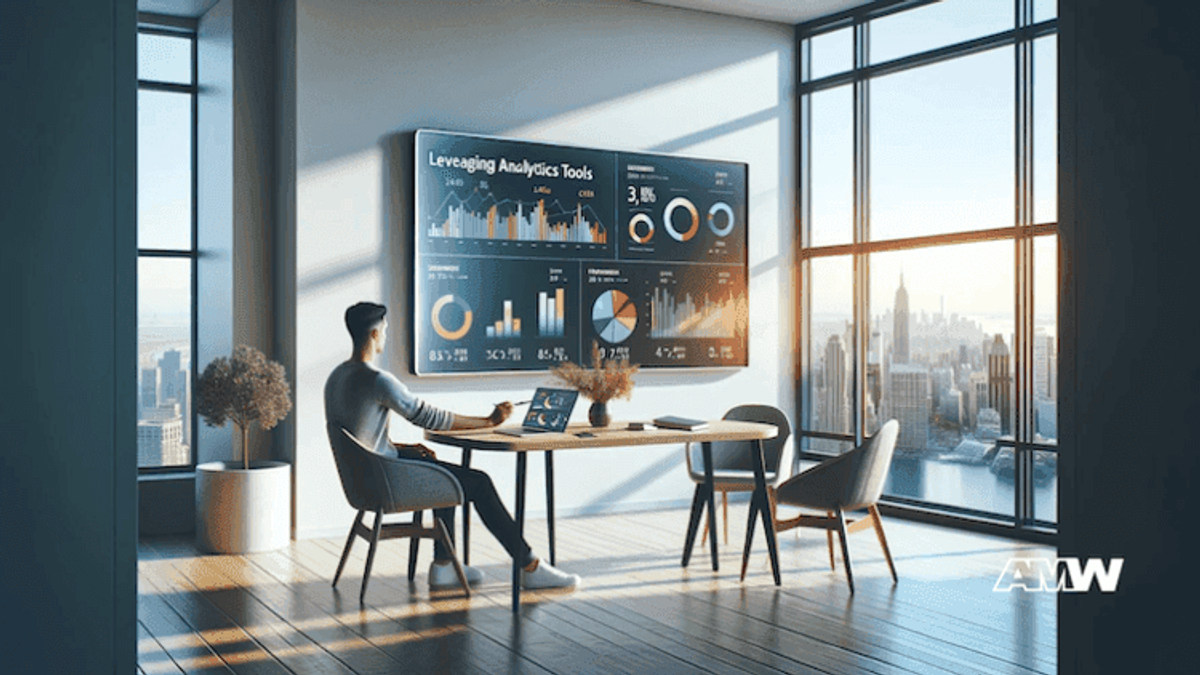Measuring the ROI of Influencer Marketing Campaigns

In digital marketing, the advent of influencer marketing is a beacon of innovation and connection.
Quick Summary
In the realm of digital marketing, influencer marketing has emerged as a transformative force, blending credibility with brand messages to foster trust and engagement. Measuring ROI is essential for understanding campaign effectiveness, allowing businesses to refine strategies and allocate resources wisely. By establishing clear objectives and leveraging analytics tools, brands can optimize performance and adapt to consumer preferences. Ultimately, the journey toward effective influencer marketi
This modern marketing marvel has revolutionized how brands engage with their audience and has also offered a pathway to forge authentic relationships between consumers and brands.
The essence of influencer marketing transcends mere promotion; it is an art form that blends the influencer's credibility with a brand's message, creating a symphony of trust and engagement. Understanding the return on investment (ROI) from these campaigns is not just beneficial—it's a critical component of a strategic marketing approach.
Ready to Grow Your Business?
Get a free consultation and custom strategy tailored to your goals.
This understanding enables businesses to justify their marketing expenditures and sharpen their strategies, setting the stage for even more remarkable achievements in future endeavors.
The Catalyst for Strategic Evolution

The imperative to measure the ROI of influencer marketing campaigns goes beyond simple bookkeeping. It acts as a catalyst for strategic evolution, offering deep dives into the effectiveness of marketing maneuvers.
By measuring ROI, businesses gain invaluable insights that refine budget allocation, ensuring resources are channeled into the most impactful areas.
This process of evaluation and adjustment is crucial in the dynamic digital marketing arena, where consumer preferences and digital platforms are in constant flux.
Moreover, quantifying the success of influencer partnerships in achieving brand objectives such as heightened brand awareness, increased sales, and deeper customer engagement not only underscores the value of these collaborations but also illuminates the path to amplifying these successes.
Crafting a Vision with Precision

Measuring influencer marketing ROI begins with establishing clear, measurable objectives. This foundational step is the compass that guides the entire campaign.
Whether the goal is to elevate website traffic, spur sales growth, magnify brand visibility, or expand social media influence, setting precise goals is paramount. These objectives act as benchmarks, illuminating the path toward success and ensuring that every strategy is aligned with the overarching vision.
This clarity of purpose is indispensable, as it directly influences the selection of metrics that will later serve as indicators of the campaign's performance.
A Roadmap to Success

Embarking on this journey requires a mindset that embraces both the quantitative and qualitative of marketing.
By establishing clear objectives and diligently measuring ROI, businesses are not just navigating the digital marketing but charting a course toward a future where every marketing dollar is an investment in their brand's continued growth and relevance. This strategic approach to influencer marketing elevates the brand's position in the marketplace and fosters a culture of continuous improvement and innovation.
Measuring and understanding the ROI of influencer marketing campaigns is more than a skill—it's a strategic imperative that empowers brands to craft impactful narratives, connect deeply with their audience, and achieve sustainable growth. Let this be the moment we embrace the challenge, knowing that our efforts today will define our success tomorrow.
In influencer marketing, success is not just about launching campaigns but meticulously understanding and measuring their impact. Businesses can unlock profound insights, drive strategic decisions, and foster remarkable growth by focusing on pivotal metrics.
Consider an influencer who crafts posts for a novel health and wellness app. The posts aren't merely promotional but share personal stories of how the app has enhanced the influencer's daily routine. The audience responds enthusiastically with likes, shares, and comments, discussing their experiences or expressing interest in the app. This high level of interaction, or engagement rate, signals visibility and a genuine connection and interest from the audience, indicating the campaign's resonance.
Ready to Grow Your Business?
Get a free consultation and custom strategy tailored to your goals.
Imagine a campaign where an influencer showcases a series of eco-friendly lifestyle products. The metrics reveal millions of impressions and a substantial reach, meaning the message has traversed beyond the influencer's direct followers to touch a wider audience. This extensive reach, significantly when it surpasses initial expectations, highlights the campaign's ability to penetrate deeper into the market, potentially attracting a new customer base intrigued by sustainable living.
A beauty brand partners with an influencer to promote a new line of skincare products. By employing unique tracking links or promo codes, the brand can monitor how many viewers are motivated to purchase after engaging with the influencer's content. A high conversion rate in this scenario validates the influencer's ability to inspire action among their followers and directly ties the campaign to tangible business outcomes, such as increased sales.
Cost Per Engagement (CPE): The Efficiency Indicator

When assessing a campaign's financial efficiency, suppose a fashion brand calculates the CPE by dividing the total campaign cost by the number of interactions (likes, comments, shares). A lower CPE suggests that the influencer's content generates substantial engagement relative to the investment, marking the campaign as cost-effective and potentially guiding budget allocations for future initiatives.
After a series of influencer-led tutorials on using a new tech gadget, the brand analyzes comments and social mentions. Positive sentiment, reflected in enthusiastic comments or increased mentions of the brand in a positive light, indicates a shift in public perception, potentially transforming casual viewers into loyal brand advocates.
Leveraging Analytics Tools

Modern analytics platforms are the linchpins in measuring these metrics. For instance, a luxury travel brand might use a third-party tool to compare engagement rates across campaigns or to benchmark its performance against competitors. These platforms enable brands to sift through vast data lakes, extracting actionable insights that inform strategic decisions.
The true essence of data lies in its story. Consider a campaign where the data reveals an unexpected spike in engagement from a demographic outside the brand's typical audience. Analyzing this alongside the influencer's creative approach, the brand discovers new market segments eager for their offerings. This revelation could steer the brand towards untapped opportunities, fostering innovation and growth.
Ultimately, these metrics and tools are not just about numbers but stories—stories of connections forged, challenges overcome, and opportunities uncovered. As brands and influencers navigate the digital landscape, this strategic, data-informed approach will illuminate the path to lasting success and impact.
In digital marketing, the process of continual optimization is akin to steering a ship through ever-changing seas. The ability to measure the ROI of influencer marketing campaigns is not merely a task—it's an adventure in growth, learning, and refinement. This journey of analyzing what resonates with the audience and what falls flat allows brands to not just navigate but thrive in the competitive waters of the digital world. It's about making informed decisions that shape the future of marketing strategies, ensuring each step forward is more informed and effective than the last.
A Cycle of Learning and Growth
At its core, continual optimization is a cycle of learning, implementing, measuring, and refining. This cycle is propelled by the desire to achieve short-term gains and long-term success. For instance, a campaign that initially seems to underperform might offer invaluable insights into consumer behavior or preferences, revealing untapped market segments or opportunities for innovation.
By embracing these findings, brands can adapt their strategies quickly, turning potential setbacks into stepping stones toward more significant achievements.
In influencer marketing, adaptability is a strategic edge. It empowers brands to stay ahead of trends, respond to market shifts, and continually refine their approach to engagement. This agility is crucial in a landscape where consumer interests and digital platforms evolve quickly. Brands that are quick to learn from each campaign and willing to pivot strategies accordingly are the ones that carve out a leading position in the marketplace.
Embracing the Journey with Patience and Precision
The journey to measure and optimize the ROI of influencer marketing campaigns requires patience, precision, and a proactive mindset. It's about embracing the nuanced dance of data analysis and creative storytelling, finding that sweet spot where numbers and narratives converge to reveal the most impactful strategies.
Ready to Grow Your Business?
Get a free consultation and custom strategy tailored to your goals.
The rewards for those who embark on this journey are substantial. Not only do well-executed campaigns lead to stronger connections with audiences and enhanced brand loyalty, but they also set the stage for remarkable growth and success.
The Authentic Connections That Drive Success

It's crucial to remember that the true essence of influencer marketing lies beyond mere numbers. It's about fostering authentic connections between brands and consumers and building relationships based on trust and genuine engagement. By diligently measuring the ROI of these endeavors, businesses gain insights that help them strengthen these connections, making every campaign more resonant and effective than the last.
As we look towards the horizon, let's envision a future where data and creativity coexist, where today's insights fuel tomorrow's innovations. In this future, brands achieve their marketing objectives and contribute to a vibrant digital ecosystem enriched by meaningful, authentic interactions.
In conclusion, optimizing the ROI of influencer marketing campaigns is both a challenge and an opportunity. It's an invitation to explore, learn, and grow in ways that transform marketing strategies and the relationships between brands and their audiences.
Frequently Asked Questions

How do I choose the right influencer for my campaign?
Choosing the right influencer involves more than just looking at follower count. Consider the influencer's audience demographic, engagement rate, content quality, and how well their brand aligns with yours. Conducting thorough research and using influencer discovery tools can help you make an informed decision.
Can influencer marketing work for B2B companies?
Yes, influencer marketing can be effective for B2B businesses, especially when targeting niche markets. Partnering with respected influencers, thought leaders or industry experts is key. These collaborations can enhance brand credibility, generate leads, and drive business growth.
How do I measure the impact of influencer marketing on brand awareness?
To measure the impact on brand awareness, track metrics such as reach, impressions, and brand mentions before and after the campaign. Surveys and brand sentiment analysis can also provide insights into how perceptions of your brand have shifted.
What should I do if a campaign fails to meet expectations?
First, analyze the campaign to understand why it didn't meet expectations. Consider factors such as content relevance, audience match, and timing. Use these insights to adjust your strategy, whether redefining your objectives, selecting different influencers, or altering your content approach.
How can I attribute sales directly to an influencer marketing campaign?
Use trackable links, promo codes, and UTM parameters to attribute sales or conversions directly to specific influencers and campaigns. This enables you to measure each influencer's effectiveness in driving tangible results.
Is there a "best" social media platform for influencer marketing?
The "best" platform depends on your audience and campaign objectives. Instagram and TikTok are popular for B2C campaigns due to their high engagement rates and visual content. LinkedIn is favored for B2B campaigns, leveraging professional networks and thought leadership content. Assess where your audience is most active and engaged when choosing a platform.
How often should I measure the ROI of my influencer marketing campaigns?
Continuous monitoring is key to understanding the performance of your campaigns. However, conducting a comprehensive analysis during and after the campaign provides a fuller picture of its effectiveness. Regular measurement allows for timely adjustments and optimization to maximize ROI.
By addressing these questions, businesses can navigate the complexities of influencer marketing more effectively, ensuring that their campaigns are creative but also measurable and results-driven.

Ready to Grow Your Business?
Get a free consultation and custom strategy tailored to your goals.


